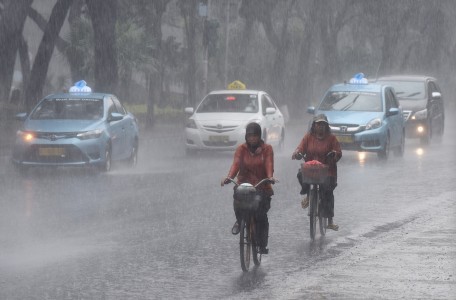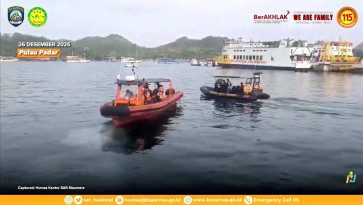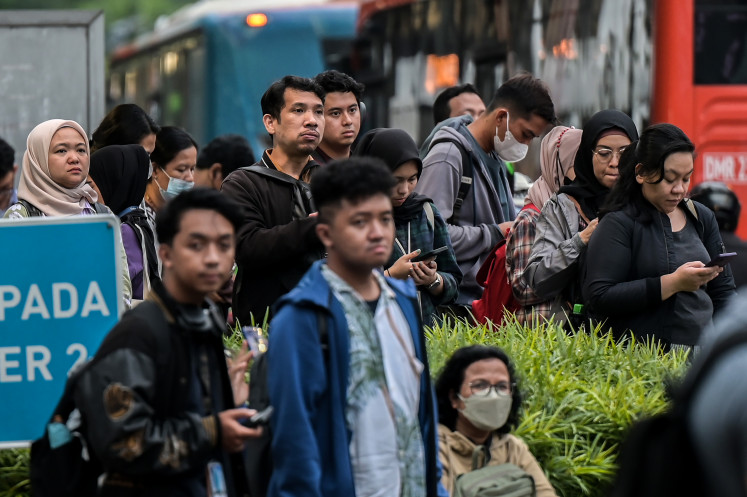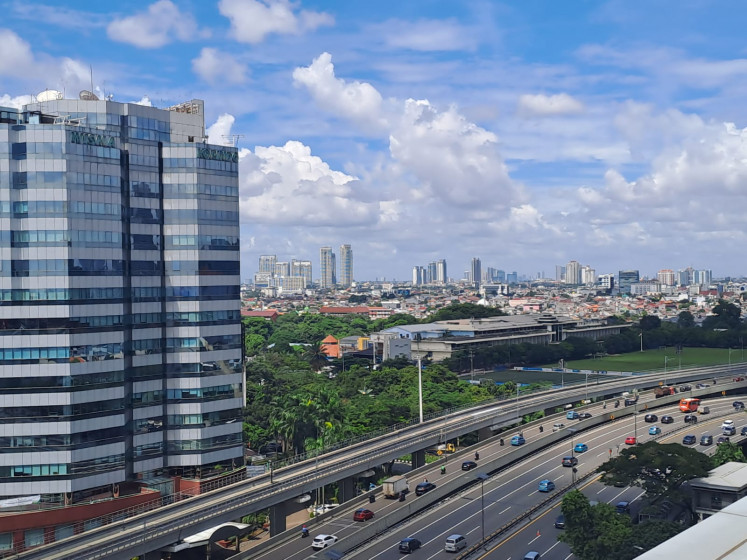Popular Reads
Top Results
Can't find what you're looking for?
View all search resultsPopular Reads
Top Results
Can't find what you're looking for?
View all search resultsJakarta braces for flooding as rainy season approaches, La Niña looms
Jakarta Governor Anies Baswedan has urged stakeholders to prepare for potentially hazardous flooding in the capital as the rainy season approaches.
Change text size
Gift Premium Articles
to Anyone
J
akarta Governor Anies Baswedan has urged stakeholders to prepare for potentially hazardous flooding in the capital as the rainy season approaches. The season’s dangers are compounded this year by La Niña, a periodic weather phenomenon that tends to cause extreme weather in the Indonesian archipelago.
“We need to be ready because we’re facing not just the flooding but also the COVID-19 outbreak. This condition requires special care,” the governor said during a ceremony to prepare for the rainy season in Jakarta on Wednesday morning.
He said disaster mitigation efforts should adhere to strict health protocols to prevent the spread of COVID-19 during evacuations.
“We need to set up more [flood shelter] tents to allow citizens to practice health protocols and physical distancing,” Anies added.
Read also: Task force warns of potential COVID-19 clusters at flood shelters
Separately, the Meteorology, Climatology and Geophysics Agency (BMKG) said on Wednesday that most of the archipelago would enter the rainy season in October. Several regions, including the capital and the western part of Java, are expected to experience extreme weather and heavy rainfall.
The agency predicted that the country would experience the impact of La Niña until at least February 2021.
La Niña is a meteorological phenomenon where surface water temperatures in the equatorial band of the Pacific Ocean become abnormally low. It is believed to occur every two to seven years and brings heavy rainfall to the Indonesian archipelago, which tends to trigger natural disasters such as floods and landslides.
However, the BMKG said it was too early to conclude that all of this year’s extreme weather would be caused by La Niña. The agency said the impact of the phenomenon would differ in each region.
Extreme rainfall triggered a flash flood in Sukabumi, West Java, on Sept. 21, killing three people. The villages of Cisaat, Pasawahan, Mekarsari and Bangbayang in the regency were heavily affected by the flooding. Nearly 1,000 people were forced to flee their homes.
The torrential rain also caused floods of up to a meter in parts of Jakarta.










